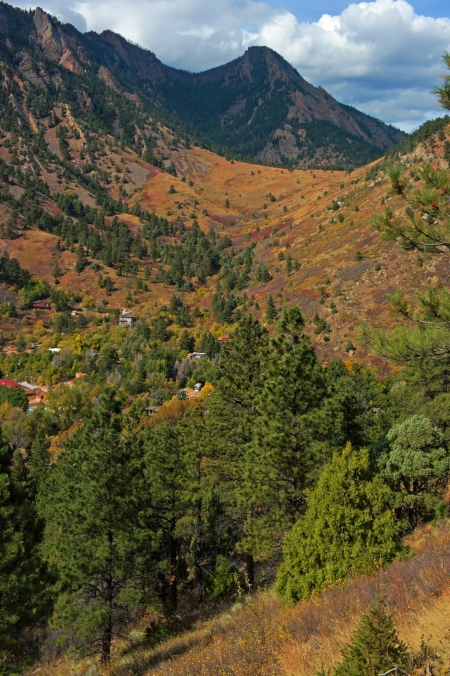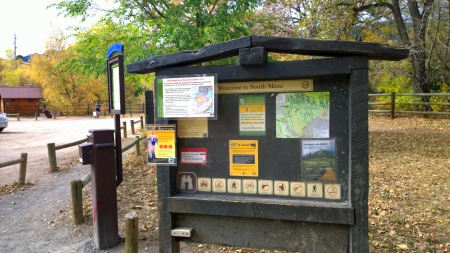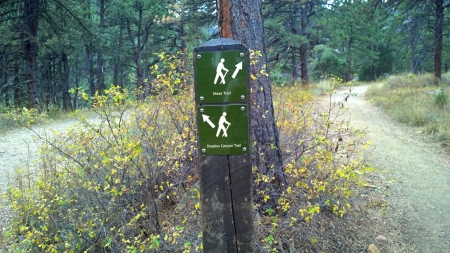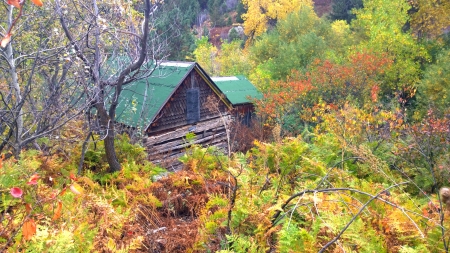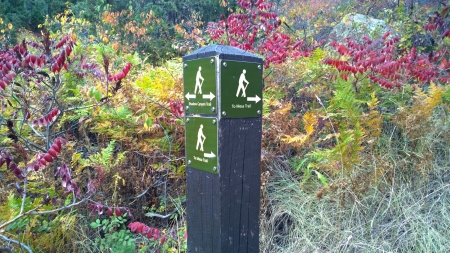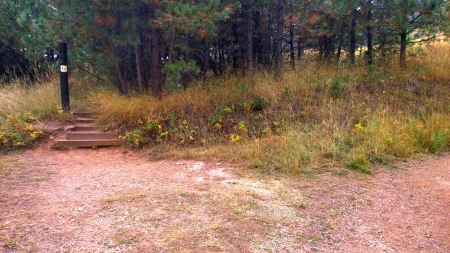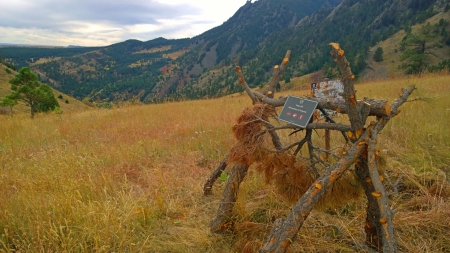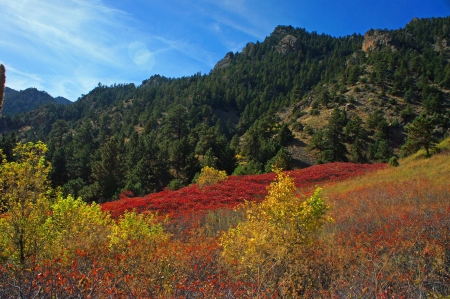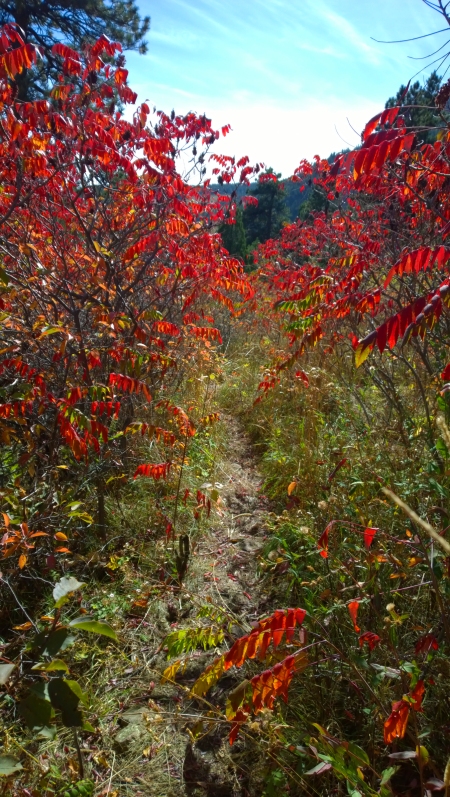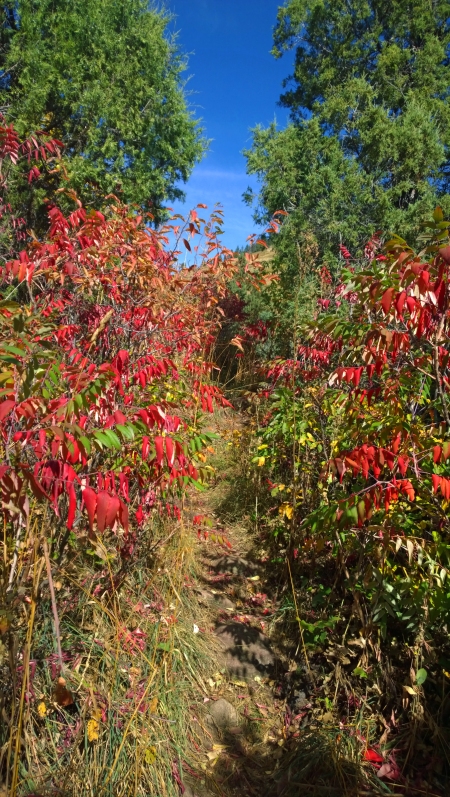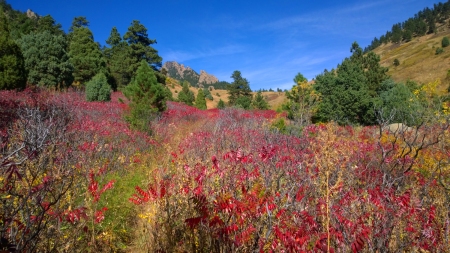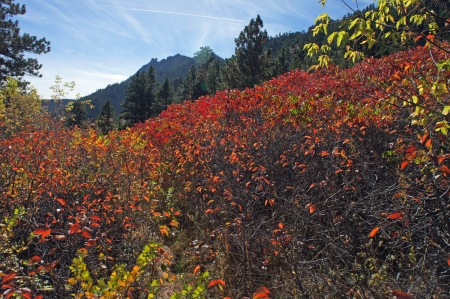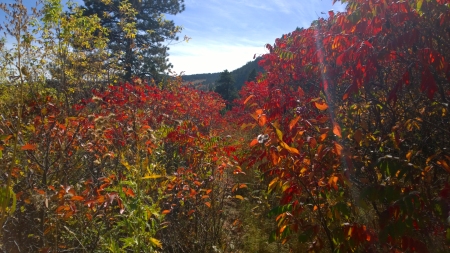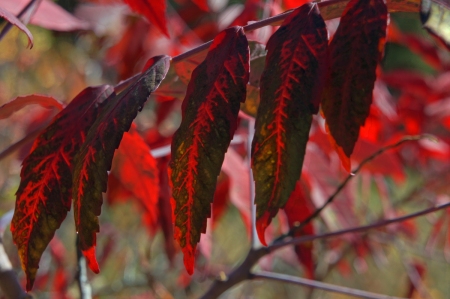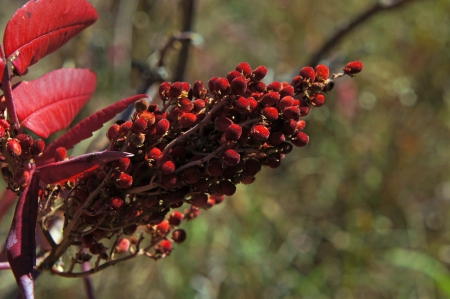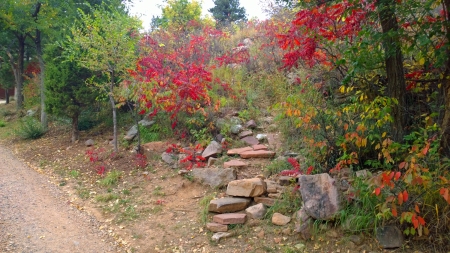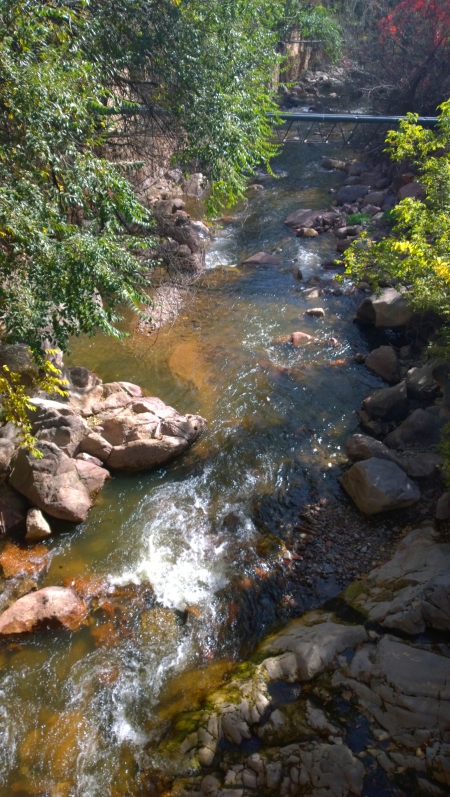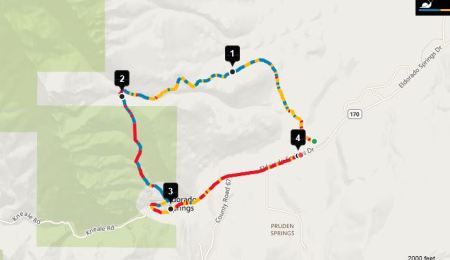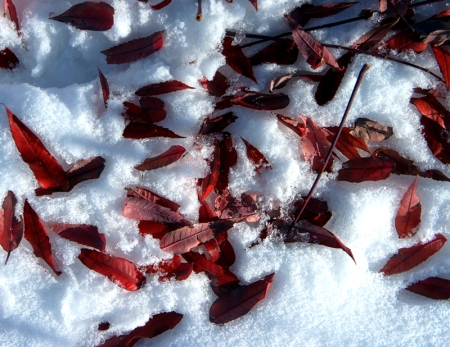Here in Boulder Colorado the native plants are generally earth-toned in Fall leaving our bright yellow and red aspens for higher elevations. One notable exception is Sumac (Rhus glabra). Sumac’s fall foliage fills our canyons with a deep crimson that is a photographic magnet.
Sumac, poison ivy, Brazilian pepper, cashews, mangoes and pistachios are all related. Rhus glabra is not poisonous and, in fact, the seeds (drupes) are a widely used spice in Middle Eastern and Mediterranean cooking. It is also used as a lemonade-like tea called Sumac-ade.
My favorite area for Sumac peeping is on Boulder’s South Side. I was hiking on the Fowler Trail a few days ago when I noticed the signature crimson on the lower portion of Shadow Canyon. I decided to return there with my cameras the following day.
The houses are in the town of Eldorado Springs (home of Eldorado Natural Spring Water). The pool is the Eldorado Swimming Pool and Resort.
This portion of the Canyon can be reached by descending from the Shadow Canyon trail. Parking is available at the South Mesa Trailhead (there is a small fee for non-Boulder cars)…
Hike up the Mesa Trail for 1.5 miles/ 2.4 km until you reach this sign, then follow the Shadow Canyon Trail…
Soon you will pass the McGillvray Cabin to the South of the trail…
The main part of the McGillvray Cabin was built sometime between 1870 and 1885. An addition was made in the mid-1920s and since their construction style is quite different, it’s easy to determine the original cabin from the new.
Stay on the Shadow Canyon Trail past this turnoff back to the Mesa Trail…
Behold The Matron in Autumn, popular with climbers… 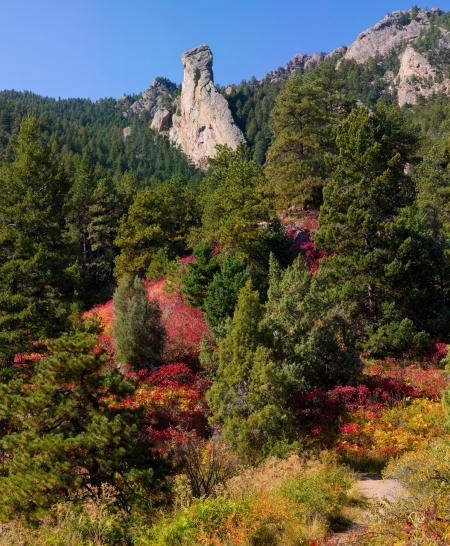
At 2.1 mi / 3.4 km you will see this missing sign which is the way to the Lower Shadow Canyon. I’ve heard this trail referred to as the “Old Mesa Trail” but I haven’t found any references to that name…
Proceed down this trail over the ridge past this weird sign. The Fowler and Goshawk Ridge trails are across the way. Down toward Eldorado Springs and through the sumac hued canyon we go…
These sumacs are taller than humans…
Leaves in transition…
The drupes are full of lemony seeds…
After 1 mi/ 1.6km the trail abruptly ends in Eldorado Springs…
The walk back to the South Mesa Trail parking area is about another mile east on Eldorado Springs Drive. Unfortunately this stretch of the loop is on the highway. To get there cross the South Boulder Creek…
It is possible to take a shorter hike up the Canyon from Eldorado Springs but the parking is limited and the trail access is tricky. Here is the loop I hiked, the mileage is shown…
Soon the snows will come and the leaves will fall…
